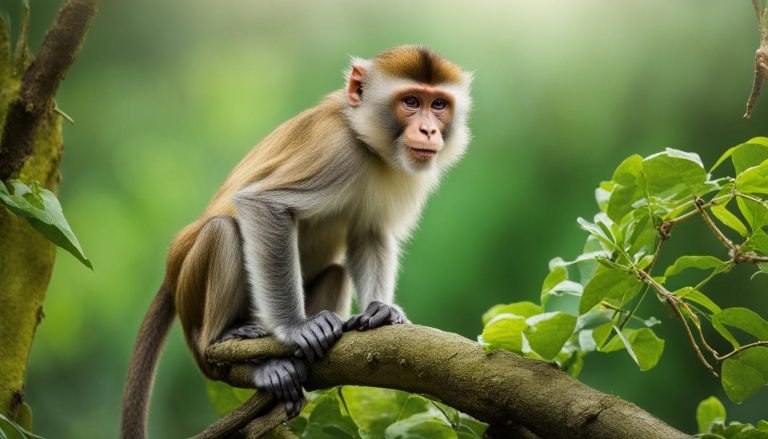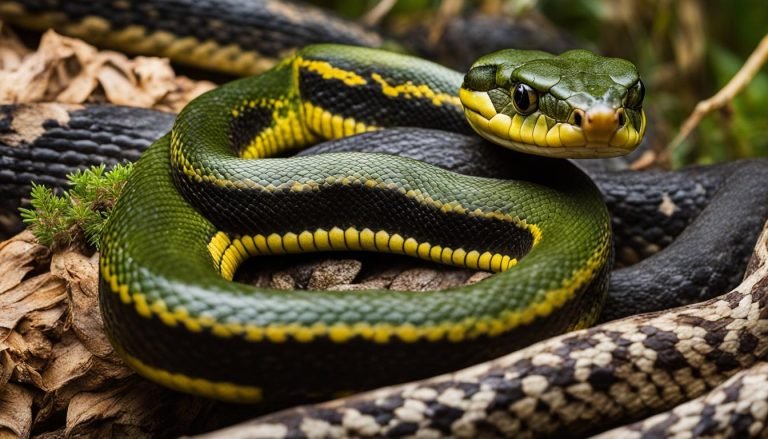Bear
Bears belong to the family Ursidae and are one of the oldest known species of land-dwelling mammals. They evolved around 20 to 25 million years ago from a common ancestor known as Ursavus, which resembled a small dog-like creature.
Over time, bears have undergone various adaptations and diversification, resulting in the different species we see today. The most closely related species to bears are sea otters, mustelids, and raccoon dogs. These adaptations have allowed bears to thrive in different habitats and develop unique characteristics.
Size
Bears are known for their impressive size. Adult males typically tend to be larger than females. The size of bears can vary depending on the species. In general, bears range from about 2 to 10 feet tall when standing on their hind legs. The largest bear species, the polar bear, can reach heights of over 10 feet and weigh up to 1,500 pounds. On the other hand, the smallest bear species, the sun bear, only grows to about 4 feet tall and weighs around 60 to 100 pounds.
The size of bears is influenced by several factors, including genetics, habitat, and food availability. Different bear species have different body sizes due to these factors. For example, the polar bear’s large size is an adaptation to its cold Arctic habitat and its need to hunt seals on sea ice. In contrast, the sun bear’s small size allows it to maneuver easily through dense forests in Southeast Asia, where it primarily feeds on fruits and insects. So, bear size is an important aspect of their adaptation to their respective environments.
Habitat
Bears are highly adaptable animals that can thrive in a diverse range of habitats around the world. They are capable of living in various environments, including forests, mountains, tundra, and even coastal areas.
Each bear species has specific habitat preferences that are influenced by several factors, including climate, food availability, and shelter. For instance, polar bears inhabit the Arctic regions, where they are well-adapted to the icy and snowy conditions. Brown bears can be found in forests across North America, Europe, and Asia, while black bears have a widely distributed range throughout North America.
Bears have evolved to suit the specific characteristics of their habitats. They have developed thick fur and layers of fat to survive in cold climates, while their strong claws and powerful muscles enable them to navigate through rugged terrains and climb trees. Additionally, bears have a keen sense of smell that helps them locate food sources in their habitat.
The geographical distribution of bear species is a testament to their ability to adapt and thrive in different ecosystems. This adaptability not only allows bears to survive but also helps maintain the balance of their respective habitats.”
Behavior
Bears exhibit a variety of behaviors that are crucial for their survival and reproductive success. While bears are generally solitary animals, adult bears typically establish their own home ranges.
However, some species, like grizzly bears, may have a loosely structured social hierarchy. In such cases, bears may tolerate the presence of other bears within their territories.
Communication plays a vital role in bear behavior. Bears use various forms of communication, including vocalizations, body language, and scent marking, to establish territories and communicate with other bears.
Vocalizations can range from growls and roars to huffs and moans. These vocalizations help bears communicate their intentions and establish dominance.
Body language, such as posturing, head movements, and even standing on hind legs, can convey different messages, including aggression, submission, or territorial ownership.
Scent marking is another important form of communication for bears. By rubbing against trees, scratching on surfaces, or releasing scents from glands, bears leave behind chemical messages that can convey information about their presence, status, and reproductive condition.
During mating season and when rearing their young, bears display specific behaviors. Mating rituals may involve elaborate courtship displays, vocalizations, and physical interactions.
When it comes to raising their young, mother bears exhibit nurturing behaviors while teaching their cubs essential survival skills, such as foraging for food, climbing, and defending themselves.
Hunting
Bears are omnivorous animals, meaning they eat both plant material and animal protein. Their diet varies depending on their habitat and the availability of food sources. While some bear species, like pandas, mainly consume bamboo, others have a more varied diet that includes berries, nuts, insects, fish, and small mammals.
Bears have various hunting techniques, such as scavenging, fishing, and actively searching for food. They have well-developed senses, including a strong sense of smell, which they use to locate their prey or food sources.
Mortality
Bears face a range of threats that can impact their mortality rates. These threats include habitat loss, climate change, illegal hunting, and conflicts with humans. Human activities, such as deforestation and urbanization, often lead to the destruction or fragmentation of bear habitats. This can result in reduced food availability and increased competition between bears and humans for resources.
Conservation efforts are crucial to protect bear populations and their habitats. These efforts include establishing protected areas, implementing measures to reduce conflict, and promoting sustainable practices. By conserving bear habitats and minimizing human-bear conflicts, we can help ensure the survival of bear populations and contribute to the overall biodiversity of our planet.
Location
Bears are distributed across various regions of the world, each bear species having its own unique geographic range. For instance, brown bears can be found in North America, Europe, and Asia. These adaptable bears have established themselves in a wide range of habitats, from the rugged mountains of North America to the dense forests of Europe. Additionally, polar bears primarily inhabit the Arctic regions, where they have evolved to survive in the harsh, icy conditions that define their habitat.
Black bears, on the other hand, have a wide distribution across North America, and can also be found in parts of Central and South America. Their adaptability allows them to thrive in diverse environments, including forests, swamps, and even suburban areas. These bears have managed to coexist with human populations, though conflicts can arise when their territories overlap with human-developed areas.
Other bear species such as the sun bear and the sloth bear have more limited geographic ranges. The sun bear is found in specific regions of Southeast Asia, such as Borneo and Sumatra, while the sloth bear is native to the Indian subcontinent. These unique bears have evolved to occupy specific ecological niches within their respective habitats, showcasing the diversity and adaptability of the bear family.







